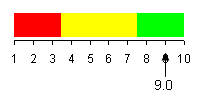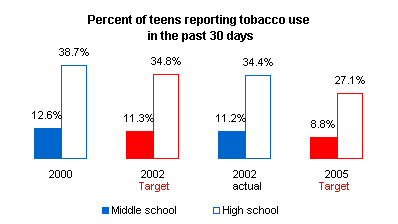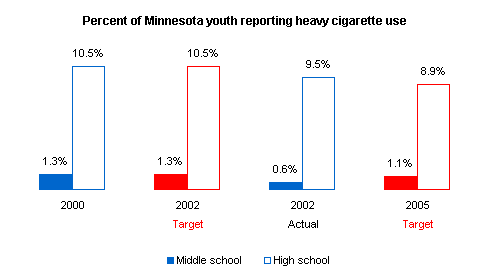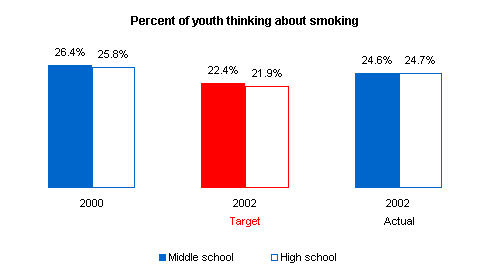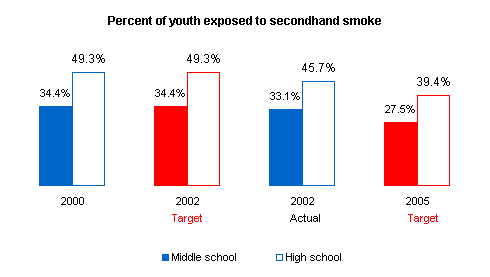
|
Tobacco Settlement Endowments: Improving Health Status for All Minnesotans Good health is both a prerequisite to self-sufficiency and a personal responsibility. Governor Ventura saw the tobacco lawsuit settlement as a rare chance to make a long-term investment in better health for all Minnesotans today and far into the future. The medical education and research trust funds will be used to keep Minnesota at the forefront in training new health professionals, and in research in prevention and treatment of disease - including diseases caused by tobacco use. The tobacco prevention and public health endowments will be used to make significant reductions in tobacco use and other risk behaviors by youth. Strategies aimed at changing youth mindsets and community norms will be developed by youth. As a result, Minnesota's young people will be better equipped to make smart choices that will increase both their health status and their prospects for self-sufficiency and future success. Fundamentally, the Youth Tobacco Prevention Initiative is about equipping a whole generation of kids to take responsibility for their own health. Healthy kids learn better, and well-educated healthy adults have far better prospects for employment and economic success. And, healthy individuals are at the heart of healthy communities.
|
|||||||||
The Big Accounting Initiative
Score Goal: Young people make healthy choices. Percentage of young people who use tobacco products. Percentage of young people who are heavy smokers. Percentage of young people who are considering the use of tobacco products. Goal: Youth live in a healthy environment. Youth exposure to secondhand smoke. Goal: Communities support healthy choices for youth. |
|||||||||

|
|||||||||
|
Source: 2000 and 2002 Minnesota Youth Tobacco Survey |
|||||||||
Note: Research has shown that young people are more likely to use tobacco products if they believe that tobacco use is an acceptable behavior and that everyone uses tobacco. They also are more likely to use tobacco when the products are easy to buy or to get through friends or family members. Cigarettes are by far the most commonly used tobacco products. Other tobacco products that young people report using include smokeless tobacco, cigars, pipe and bidis. The measure of youth tobacco use comes from the Youth Tobacco Survey, first conducted in 2000 to provide baseline measurements of tobacco use among Minnesota adolescents. The survey defined current tobacco use as the use of any tobacco products on one or more days in the past 30 days. |
|||||||||
| top
|
|||||||||
|
Source: 2000 Minnesota Youth Tobacco Survey |
|||||||||
Note: Heavy smoking increases health risks. Heavy smokers are more likely to be addicted to nicotine and find it harder to quit. For this reason, achieving a decrease in the number of young people who are heavy smokers will take some time. Change most likely will not be evident on this measure for several years. In the Minnesota Youth Tobacco Survey, youth were asked to tell, in the past 30 days, how many cigarettes they smoked per day on the days that they smoked. Youth who smoked six or more cigarettes per day on the days they smoked are considered heavy smokers. |
|||||||||
| top
|
|||||||||
Percentage of young people who are considering the use of tobacco products. |
|||||||||
|
Source: 2000 Minnesota Youth Tobacco Survey |
|||||||||
Note: The state's goal in 2002 is to reduce by 15 percent the percentage of never-smokers who are susceptible to starting smoking. Trying and experimenting with cigarettes is an important step on the path of addiction and dependence. It is important to identify young people who have never smoked but are leaning toward trying it out. Never-smokers who are in the preparation stage are more likely to try cigarettes than those who are committed nonsmokers. Decreasing the desire to begin smoking is an important step toward reducing the number of youth who eventually start smoking. The Minnesota Youth Tobacco Survey asks a series of questions that show if a young person is likely to start smoking. Some nonsmokers have entered what is called the "preparation" stage - they have begun to form ideas and images about the possible benefits of smoking and may see themselves as trying it in the near future. Their commitment to avoiding cigarettes is not firm. |
|||||||||
| top
|
|||||||||
|
Source: Minnesota Youth Tobacco Survey |
|||||||||
Note: Secondhand smoke is a complex mixture of chemicals from smoke exhaled by a smoker and from a lit tobacco product (cigarette, cigar or pipe). Secondhand smoke contains thousands of chemicals and is known to cause many serious illnesses in nonsmokers including lung cancer, heart disease, asthma and respiratory infections. Living with someone who smokes at home not only increases a young person's risk of exposure to secondhand smoke, it also increases the likelihood that the young person will take up smoking. The Minnesota Youth Tobacco Survey asked students if they were exposed to secondhand smoke in a room or car, three or more days in a seven-day period. While it is hoped that this measure will stay steady or steadily decline over the next five years, there is a possibility that more students will report exposure to secondhand smoke if media campaigns or other activities raise their awareness of the issue. |
|||||||||
| top
|
|||||||||
|
|
|||||||||
Note: It is not legal for clerks at stores to sell tobacco to people under age 18 years. However, youth under 18 have been able to buy cigarettes and smokeless tobacco (chew tobacco) at stores. Research has shown that young people are more likely to try smoking if tobacco products are easy to get. In 2002, a random check of retailers in Minnesota found that 15% sold tobacco
products to youth under age 18. The state's goal in 2002 is to reduce the
proportion of retailers selling tobacco to minors to 20 percent, which is the
federal requirement on this measure. We currently Where can I go to learn more?
|
|||||||||
| top
|
|||||||||
